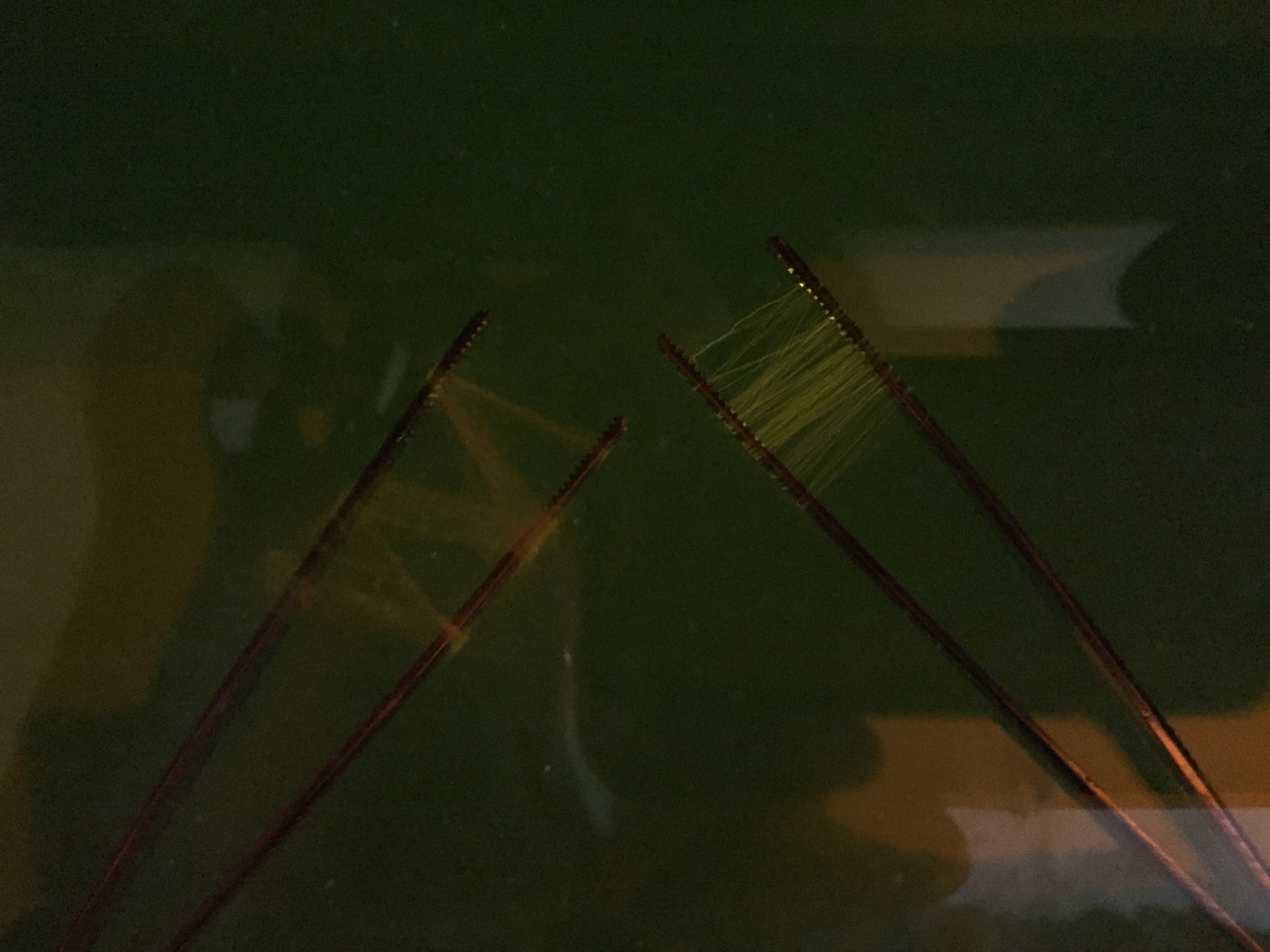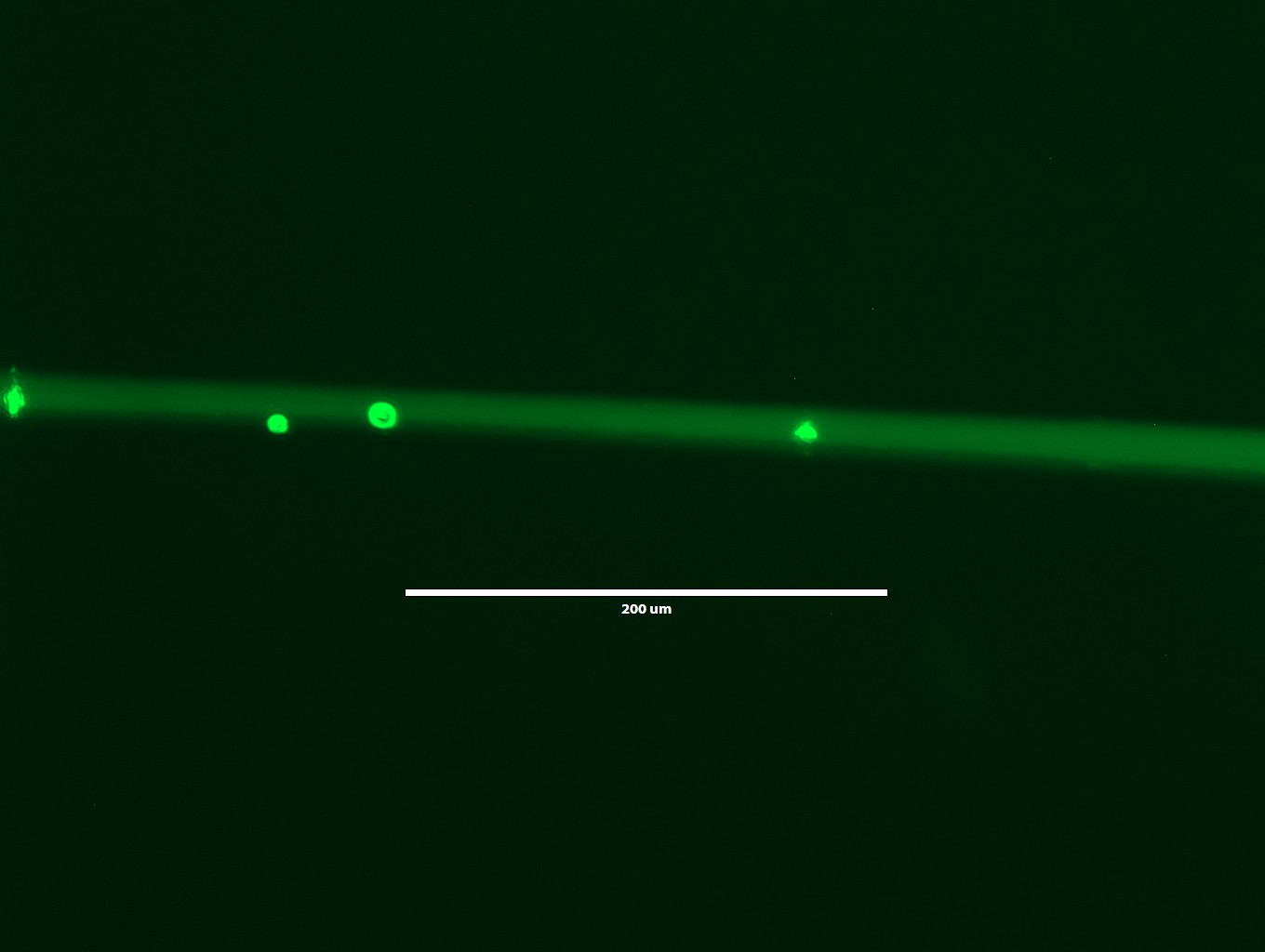Team:UCLA/Notebook/Materials/14 July 2015
Spinning more Tamura
- Fasih prepared a pooled Tamura fraction
- concentration is 1.6 mg/mL
- want to spin total volume of 300 uL
- Let's prepare a dope such that the Tamura:silk mass ratio is 1:500, and 15% w/v.
- recipe
- 225 uL of 20% w/v silk dope
- 56.1 uL of the pooled Tamura fraction
- 19.4 uL of ddH2O
- procedure
- spun at 6uL/min into 70% v/v ethanol
- spun silk was wound around tweezers
- results
- the spin appears to be successful
- the resulting thread was much more resilient than the previous spin.
- visual inspection under the UV box shows that it fluoresces
- UV microscopy verified its fluorescence.
- thoughts
- The fact that the fiber was stronger and thinner during this spin could be due to a number of factors:
- this spin was 15% w/v. Last time's spin was 12% w/v.
- As we wound the thread around tweezers, we were stretching the thread.
- This spin's fluorescence is much less than last time's spin, which was much thicker. This is despite the fact that last time's spin had a silk:tamura ratio of 4000:1, while this time's spin has a ratio of 500:1. This indicates that the thickness of fiber under the microscope does matter -- thicker threads fluoresce more due to having a greater amount of GFP per length of thread.
- The fact that the fiber was stronger and thinner during this spin could be due to a number of factors:


